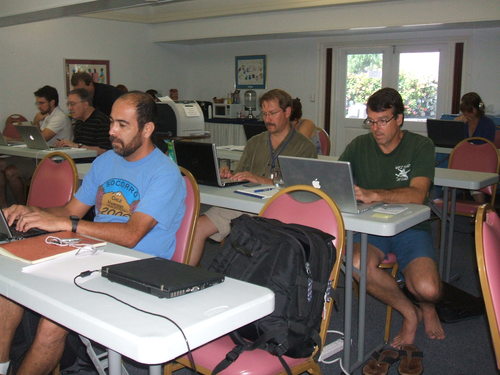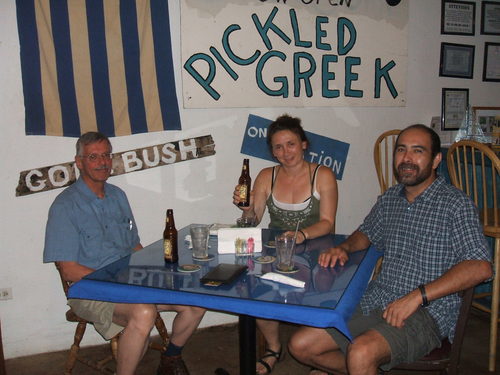Shown below standing in the cabin of the G-V are Dr. Jorgen Jensen, project director from the National Center for Atmospheric Research and one of the principal investigators for PREDICT, Dr. Michael Montgomery from the Naval Postgraduate School in Monterey, CA. On the right below are the all-impotant pilots who make this all possible, Ed Ringleman and Henry Boynton from NCAR, along with Mike.
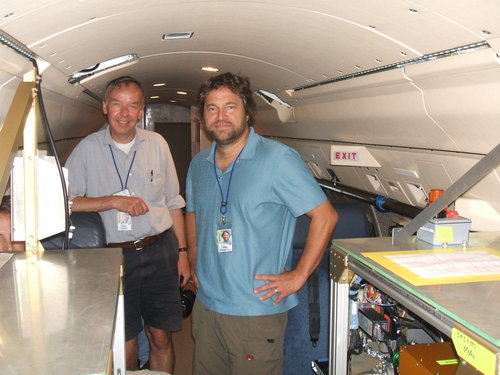

Here are the pilots at work during one of our flights. (No locked cockpit doors here!)

Dropsondes are the main tool we use in PREDICT to explore the atmosphere. A dropsonde is a small cylinder with a GPS receiver and sensors for temperature, pressure, and humidity. It is launched out of the airplane and descends with a small parachute, radioing back information until it splashes into the ocean. The horizontal movement of the dropsonde is used to calculate the winds as it descends, which is where the GPS receiver comes in. Below is shown NCAR dropsonde operator on the G-V, Laura Tudor. On the left she is loading the dropsonde tube in the back of the aircraft and on the right she is launching the sonde and processing the data.

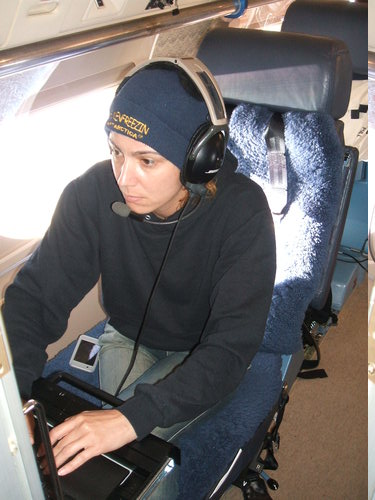
The first mission was a "shakedown cruise" to test equipment and educate the mission scientists who will be on the aircraft during the research flights. Shown below are Michael Bell (Dr. Bell as of a few weeks ago!) and myself at work on board the G-V during the first flight. Michael was a student of Dr. Michael Montgomery at the Naval Postgraduate school in Monterey, CA, and he is now a research scientist there.
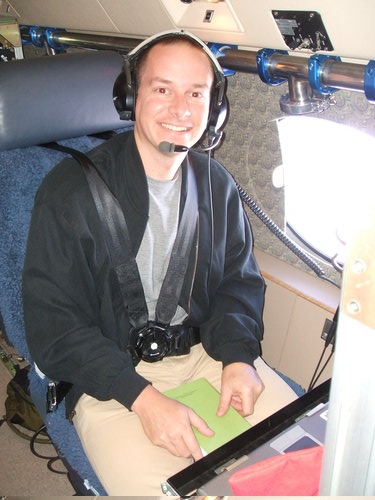
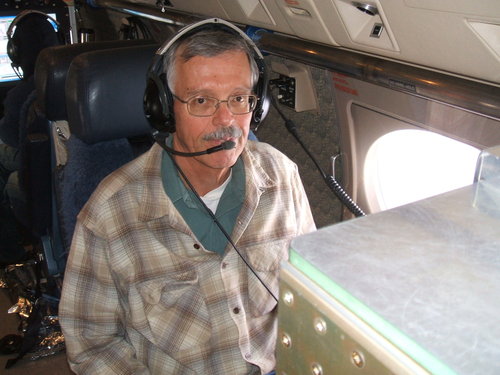
The operations center for the project is in the hotel's conference room. It is the site of daily weather briefings (see Jason Dunion of NOAA's Hurricane Research Division giving a briefing), the project computer network (see Saska hard at work below), air conditioned haven in a sea of heat and humidity, and general locus of conversions about science, scientific gossip, St. Croix, etc.
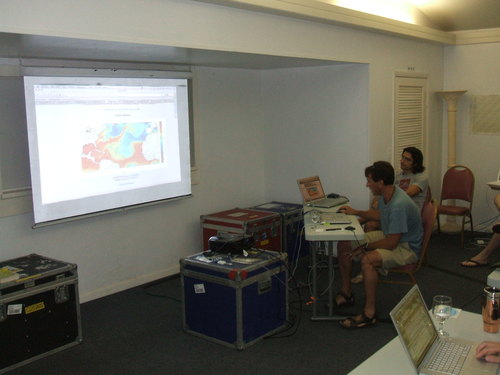

The tension mounts in the middle of a case study -- where is this storm going to be for the next flight? What kind of pattern should we fly? Can we get into the required airspace? Is the system intensifying? Below left is Lance Bosart (SUNY Albany) giving the daily weather briefing. On the right are (left to right) Roger Smith (Munich), Chris Davis (National Center for Atmospheric Research), Mike Montgomery (Naval Postgraduate School), and Chris Velden (University of Wisconson), all intensely focused on the briefing.
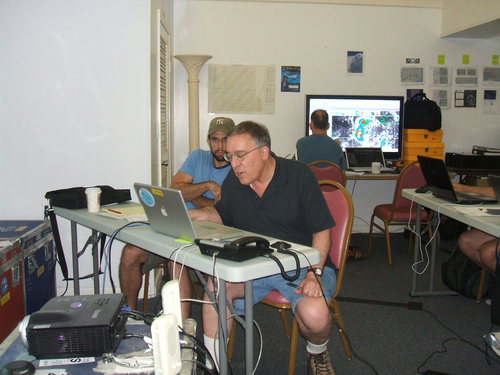
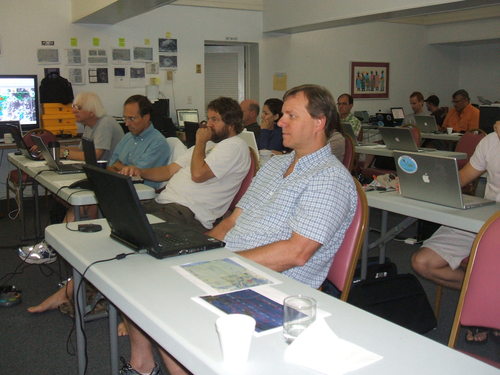
Carlos Lopez joined Saska and myself for the intensive double crewing part of PREDICT, and will remain in St. Croix until the end of the project while Saska and I return home after the intensive phase. Carlos will take my place as flight scientist on board the G-V aircraft. On the right we are seen at our favorite place for dinner, the "Pickled Greek".
